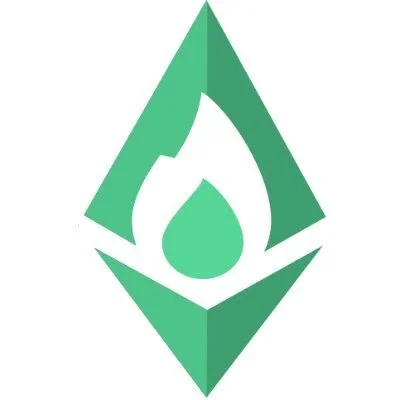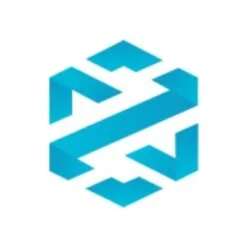Ethereum Gas Station Network (GSN)

The Ethereum Gas Station Network (GSN) solves a significant problem in the Ethereum ecosystem by abstracting away the need for end users to directly manage or hold ETH to pay for transaction gas fees. This creates a more seamless and user-friendly experience for decentralized applications (dApps), enabling them to function without forcing users to deal with the complexities of Ethereum gas costs.
Key Features of the Ethereum Gas Station Network (GSN):
- Gasless Transactions for Users:
- GSN allows users to interact with Ethereum dApps without needing ETH in their wallets for transaction fees. This is achieved by abstracting the gas fee payment away from the end user, allowing dApps to pay for the gas fees on behalf of their users.
- Gasless clients can still initiate transactions, and the costs associated with them can be handled by the dApp or a third-party service that subsidizes or pays for the fees.
- Decentralized System:
- The Gas Station Network itself is decentralized, ensuring that the solution doesn’t compromise the security or integrity of Ethereum’s blockchain. This is crucial because users are still interacting directly with Ethereum smart contracts, and the system does not introduce any centralized points of failure.
- Increased Usability:
- By abstracting gas payments, GSN greatly improves the user experience (UX) for dApp users, reducing friction and lowering barriers to entry, especially for those new to crypto. This can increase adoption of Ethereum-based applications.
Example Use Cases for GSN:
- Privacy:
- The GSN can be used to enable users to interact with Ethereum-based systems, such as withdrawing tokens sent to stealth addresses, without requiring ETH for transaction fees. This can be especially useful in privacy-focused applications where users may not want to hold or expose their ETH balance.
- Pay for Gas with ERC-20 Tokens:
- Users can pay gas fees using ERC-20 tokens that support the permit function, which allows for a more seamless experience by letting users use tokens they already have (without needing to convert them to ETH). This can be particularly useful for dApps that issue their own tokens and want to create a frictionless experience for their users.
- Pay for Gas Off-Chain:
- GSN supports off-chain gas payments, such as through a Layer 2 (L2) rollup or even a credit card. This opens up a wider range of payment options, making it easier for users to engage with dApps without needing to hold any cryptocurrency or manage on-chain transactions themselves.
- Onboarding New Users:
- The GSN can help dApp developers onboard new users by subsidizing the gas fees for transactions. This means that new users don’t need to buy ETH or set up a wallet with ETH to interact with a dApp. This can be a key onboarding strategy, especially for projects targeting non-crypto native users.

The Problem GSN Solves:
Without GSN, users must have ETH in their wallets to pay for gas fees when sending a transaction on Ethereum. This presents several challenges:
- Barriers for New Users: New users must first acquire ETH before they can use any Ethereum-based dApp. This usually requires passing KYC (Know Your Customer) checks on exchanges and purchasing ETH, which can be a significant hurdle for non-crypto-native users who may be unfamiliar with concepts like gas fees or the need to hold ETH.
- UX Pain for Existing Users: Even for users who are familiar with crypto, the need to constantly replenish their ETH balance to pay for gas can be annoying. This means that even if a user has plenty of an ERC-20 token (for example, USDT or DAI), they still need ETH in their wallet to cover transaction costs, which can result in unnecessary complexity and friction.
Benefits of Using GSN:
- Improved User Experience:
- GSN eliminates the need for users to manage or worry about ETH balances for gas fees, reducing friction in the onboarding process and making the experience smoother overall.
- Broadens Access:
- By enabling gasless transactions and off-chain payment options, GSN opens up Ethereum-based applications to a wider audience, including those with limited crypto knowledge or those who do not hold ETH.
- Enhances Developer Flexibility:
- Developers can design applications that abstract the complexities of gas payments, allowing them to offer more flexible and user-friendly models for interacting with Ethereum.
- Encourages dApp Adoption:
- By eliminating the need for ETH for gas, GSN can increase the adoption of decentralized applications, particularly in sectors that require frequent transactions, like gaming, DeFi, or NFT platforms.
Conclusion:
The Ethereum Gas Station Network (GSN) represents a significant advancement in improving the usability and adoption of decentralized applications on Ethereum. By removing the need for end users to hold or manage ETH for transaction fees, GSN reduces barriers to entry for both new and existing users. Whether used for privacy, enabling alternative payment methods like ERC-20 tokens, or simplifying onboarding, GSN provides a much-needed solution for the frictionless interaction with Ethereum’s blockchain.
This makes it a crucial tool for developers looking to create user-friendly, scalable dApps while still maintaining the security and decentralization of the Ethereum network.
Ethereum Gas Station Network Participants

GSN is an open-source public good funded by

Integration
























Eyad –
good
CHARITY RAMOS –
Nice